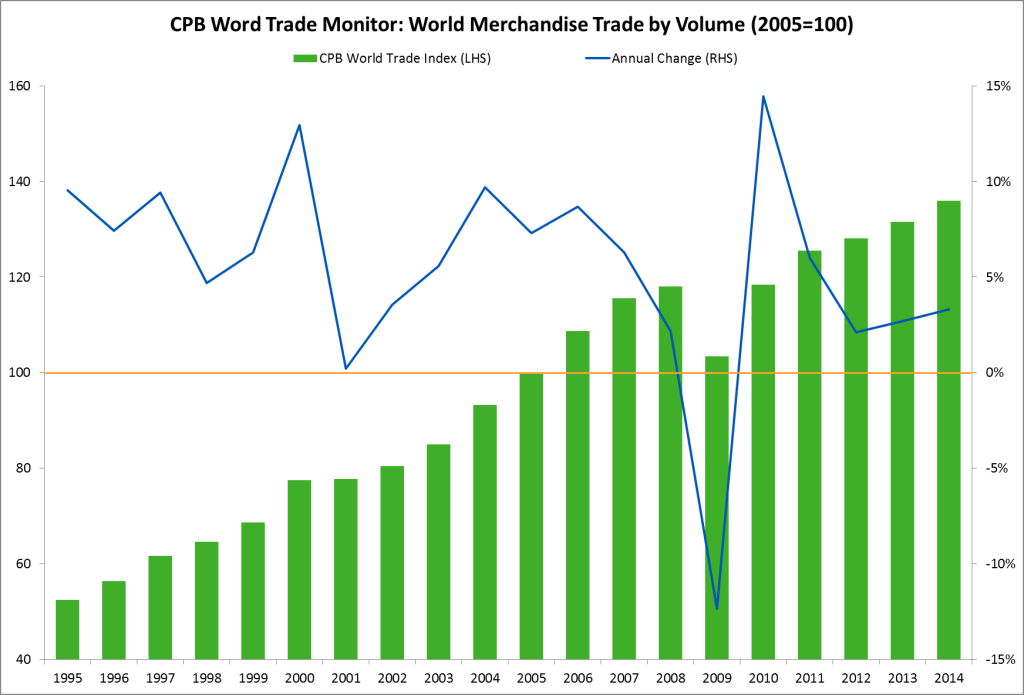
But so far in 2015 the outlook for world trade is mixed. The Baltic Dry Index is near a 30-year low, down 80 percent since from its high at the end of 2013. Although partially due to a shipping glut rather than decreasing volumes, Maersk, a shipper accountable for around 15 percent of global trade, is seeing a drop in demand. The company recently announced that it would cut capacity by 10 percent in 2015 for trade routes between South America’s east coast, northern Europe, and the Mediterranean.
And the Netherlands’ CPB indicates that emerging economies may be loosing steam as the engines of trade growth, as world trade has been waning in recent months primarily due to falling activity in emerging economies, a trend most notable in emerging Asia. Instead it is the larger, developed economies of the United States and Japan which are up, particularly US imports and Japanese exports. The comparatively upbeat economic outlook of these two countries may yet propel world trade to another record in 2015.
